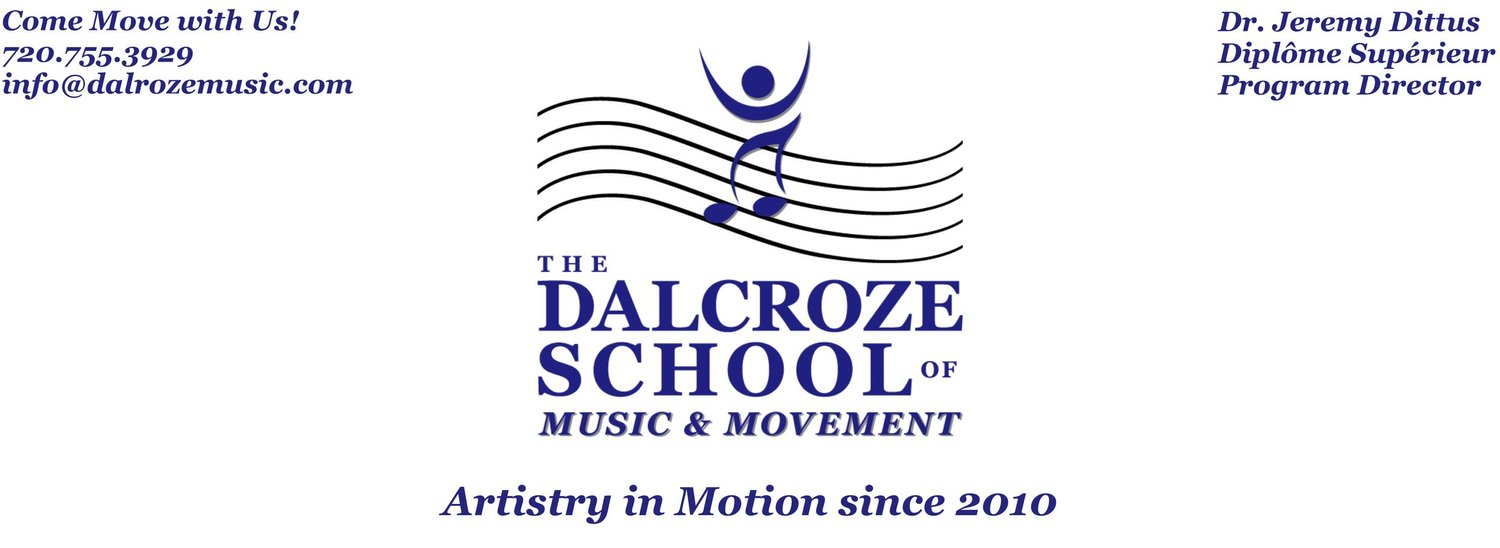What does Dalcroze Eurhythmics provide to musicians?
Émile Jaques-Dalcroze created and implemented his ideas, the first modern method of music education, for pre-professional conservatory students around 1900. His work was modified later for children. It remains an essential part of the curriculum at leading institutions, elementary to collegiate, around the world. Stravinsky, Bloch, Diaghilev, Nijinski, Honegger, Du Pré, and William Westney are among the artists who worked with Dalcroze or were directly affected by his philosophy.
Dalcroze offers an experiential way of knowing music through the body.
Musicians discover musical concepts in a playful manner, rather than by rote.
Musical concepts become more tangible, less arbitrary.
The teacher continually improvises activities-change is a constant in the lesson.
Students must be continually present, alert, and invested in such a classroom dynamic, resulting in heightened listening skills, improved flexibility, and a bolstered intuitive response to music.
Dalcroze uses movement, a non-verbal form of communication, to teach music, a non-verbal art.
As we can't see or touch music, embodying it physically makes it more vivid and tangible.
Feeling musical concepts in our bodies improves our ability to store and recall musical information.
This facilitates a workable musical vocabulary, one that is immediate and purposeful.
Dalcroze builds an exceptional gateway to impart music aesthetics, affect, and meaning to musicians of all ages.
Dalcroze enables the entire body as an instrument.
The body can express many layers of musical information at the same time, making it a vehicle for learning the many types of multitasking required for a successful performance.
Dalcroze trains the body to attain supple and fluid independence-at the same moment the feet can perform one idea, the hands and arms another, and the voice yet another.
When musical and physical skills are strengthened jointly, navigating an instrument becomes much easier, communication in chamber music becomes more effective, and orchestral ensemble skills improve dramatically.
By its nature, Dalcroze remains one of the few process-oriented music educations available today. For this reason, it works exceptionally well in tandem with private lessons.
Dalcroze study is comprehensive divided into three main categories:
Eurhythmics provides training for structural elements (beat, duration, rhythm, meter, texture, phrase, and form) and aesthetic elements (nuance, dynamics, articulation, tempo, and affect). Students gain control of their bodies, becoming freer to express creatively-both physically and musically.
Solfège trains the eyes, ears, and voice. It enables a student to listen to music and transcribe it onto paper, and to look at sheet music and hear it internally without the use of an instrument.
Improvisation enables students to create music instrumentally or vocally. It usually begins with movement or the voice to facilitate the creative process. Bodily gestures relate to gestures used on the instrument; the connections between movement and music are clarified.
